
© Liza Voll. (Click image for larger version)
www.kathleenbreencombes.com
www.bostonballet.org
Kathleen Breen Combes has for a long time been my favorite dancer in Boston Ballet. Her combination of superb technique, luminous presence, and the great joy she conveys in performance make her unique and memorable. I was therefore delighted when she found time in her busy schedule to sit down with me recently at the company’s headquarters to discuss her career.
Let’s begin at the beginning; so tell me: What originally led you to ballet?
My mother started me in ballet. She was told that my leg muscles weren’t fully developed and she was a physical education teacher who loved ballet, so she arranged for me to take classes.
And how old were you at the time?
Three.
Did you know anything about ballet at that age?
Absolutely nothing.
And did you like it?
I loved it from the beginning. My first class was half an hour of tap and half-hour of ballet, and early on I said “Mom, I don’t want to do the tap, I just want to do the ballet.”
So your parents were supportive?
Very.
And your siblings?
I’m one of six and yes, they were all supportive.
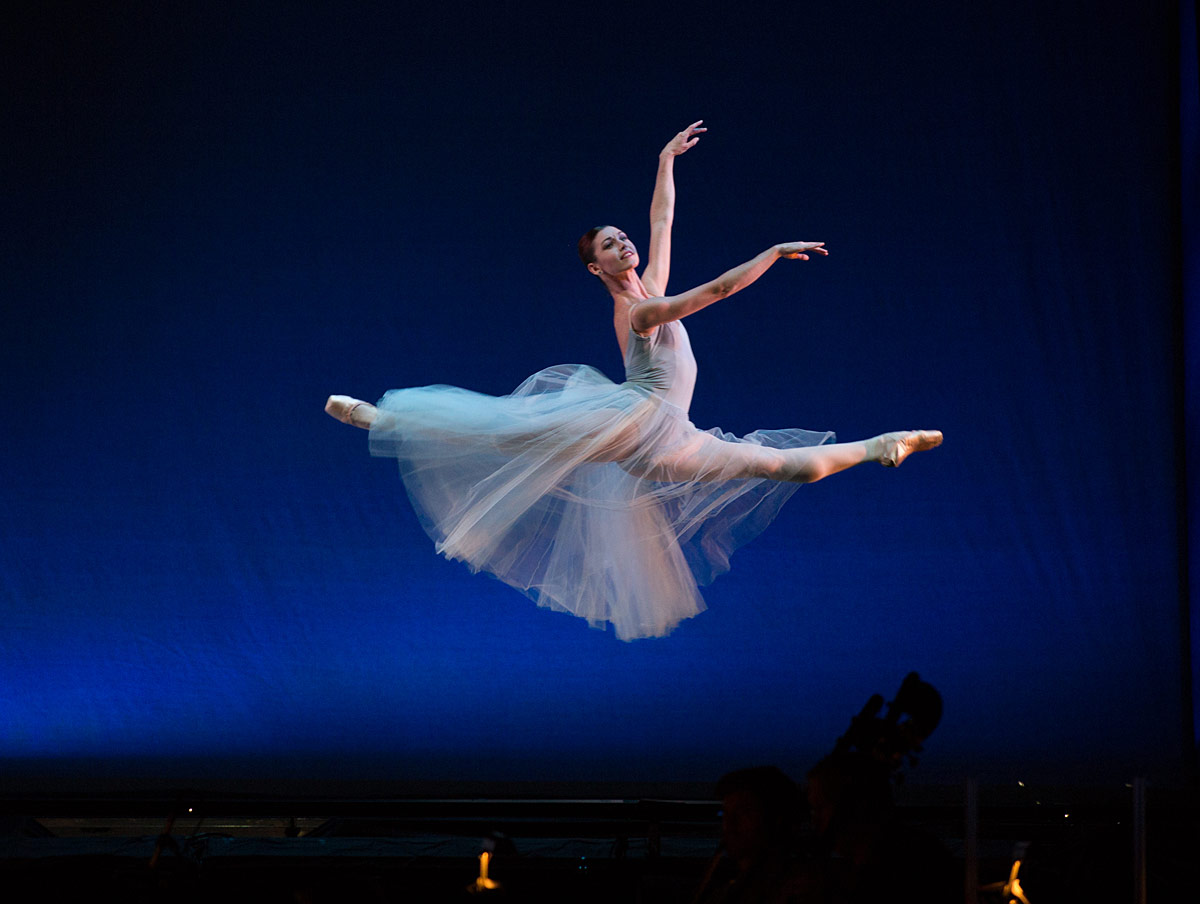
© Rosalie O’Connor. (Click image for larger version)
I understand that Magda Aunon was important in your career.
Magda was the first teacher I remember once I really knew I wanted to be a dancer. I was about 8 or 9, and I remember the first day I went into her studio one of the other teachers had seen me in class and they took me by the hand and stopped her class and said “Magda, come here” and she came over and started stretching me. I could tell there was an interest right away, and within six months she’d spoken to my Mom and said she thought I should have private lessons with her and thought I had a real future.
So Magda was formative?
Very. And she was the first person who made it more about quality than quantity, who explained that ballet was an art form and it was about expression more than how many pirouettes you could do.
It’s my understanding that your first job was with the Washington Ballet in DC for three years and then, in the transition period between Washington and Boston, when you’d already signed with Boston Ballet, you appeared at the New York International Competition, an event which turned out to be scandalous since you were cut in the first round. I was there and I vividly recall the audience’s consternation. But since your partner kept being called back, we saw you dance more and more, which meant that the judges’ error became more and more obvious. So they gave you the Leskowitz Award as a consolation.
Yes, that’s all true, but it actually worked out well since people remembered me much more than if I’d won. And Wendy Perron of Dance Magazine ended up putting me on the cover partly because of it. When she called a few years later, the first thing she said was that she remembered what had happened at the competition.

© Gene Schiavone. (Click image for larger version)
Aside from that initial setback at the New York International Competition, have you had any other discouragements or difficulties along the way?
Definitely. I was told my body type wasn’t really ideal, and during high school I had ballet teachers who said that maybe I should consider pursuing college because my body wasn’t suitable for classical ballet. I didn’t have incredible feet or the best lines, and at the time my body was going through changes. It’s true that I don’t have the ideal body type, but I think that what I do have has made me unique. I’m strong, my ankles are strong, maybe they’re not bendy but I can do things other people can’t. I can jump high because I have muscular legs, things like that, so everything has worked out.
What for you is the hardest thing about being a dancer?
The fact that the work is never done, but that’s also the most interesting thing. You come in every day and there’s always a new challenge, but it’s also what keeps you coming in. You have to continually work on something. You keep working toward perfection, but then perfection is boring and anyway no one ever achieves it. I remember one day Maina Gielgud was coaching me in Giselle, and she’s an incredible coach, and she said that in rehearsal you should strive for perfection but ultimately on stage it’s your imperfections that make you much more interesting.
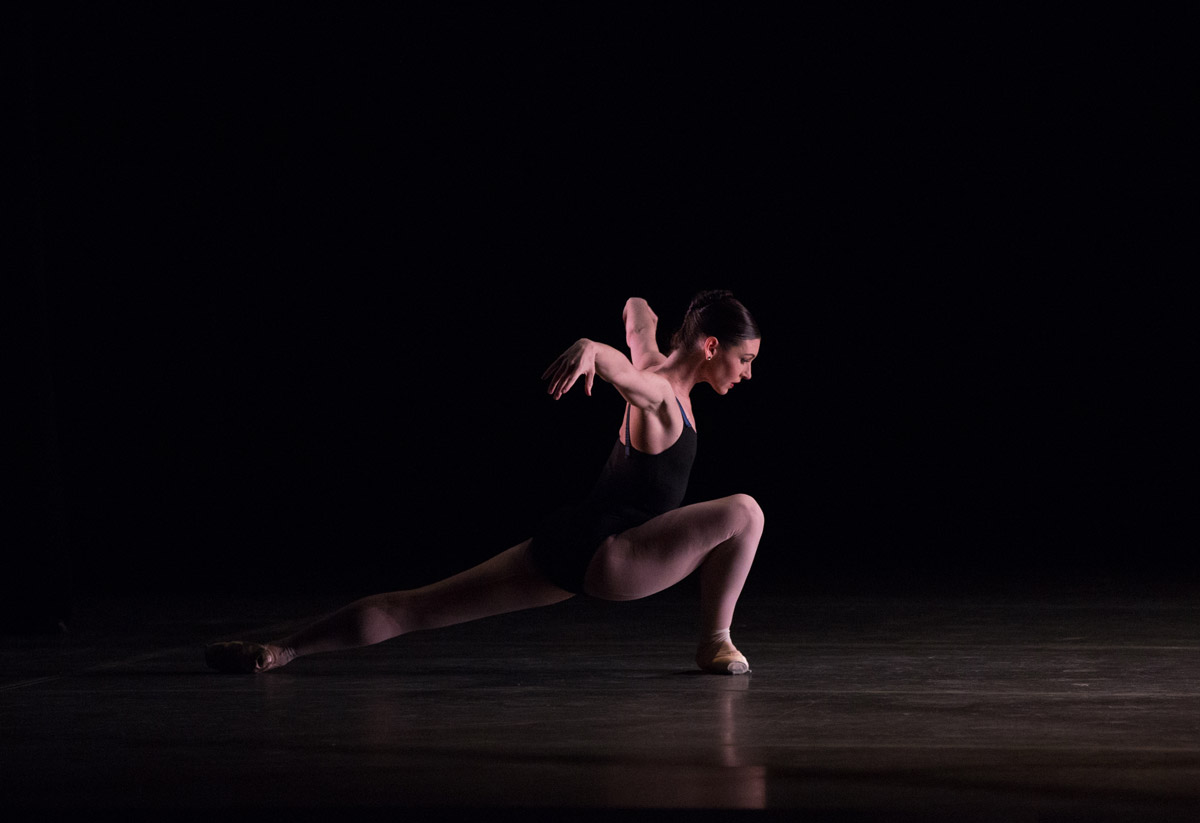
© Rosalie O’Connor. (Click image for larger version)
Do you feel you have anything in particular you need to work on now at this point in your career?
I think it’s just a continual process of facing the reality of your body every day and what it’s going to give you and what you need to work on. Some days you feel great and some days you come in and you have a lot of pain and you have an old injury or you’re working on something that’s particularly hard on one part of your body but you have to work through that. And with our repertory being so incredibly versatile, our bodies are constantly challenged.
Is there any other major American company with a repertory as versatile as Boston Ballet’s?
I don’t think so, and I’m definitely one of the people who does all of it and so I’ve had to figure out how to maintain that physically.
I’ve been so struck with how flexible and limber you are in avant-garde pieces like Forsythe and also Jeffery Cirio’s new piece fremd (DanceTabs review), almost like you’re a contortionist.
(laughs) They call it hyper-mobile in Physical Therapy.
Whatever they call it, you have it in spades. And now can you give us a capsule history of your career with Boston Ballet?
I joined the company as a member of the corps when I was 21, was promoted to second soloist two years later, then first soloist two years after that, and promoted to principal two years after that.

© Rosalie O’Connor. (Click image for larger version)
Have you had any favorite partners?
It’s weird, I’ve not danced with a regular partner, but the upside of that is that I’ve gotten to dance with virtually everyone. I’ve had the opportunity to dance with some great people. I absolutely loved dancing with James [Whiteside], so it was unfortunate for me that he left when he did because I felt like we had a great connection. I did Don Q with him and Symphony in Three Movements and then we did Romeo and Juliet together so it was kind of like we were starting to get a very nice chemistry together so it was a shame for me when he left. He was one of my favorites. He’s one of the most reliable dancers in that he will always get the job done with no drama, and he’s a fantastic partner. And of course dancing with Yuri [Yanowsky, her husband] is always very special.
Do you have any favorite choreographers?
I absolutely love dancing Jiri Kylian’s work, and I feel like I have a very special connection to Forsythe. He’s only been here twice, but he re-choreographed both of my solos each time I worked with him. In Second Detail he gave me my own version of my solo, and then we worked with him via Skype and he changed my Vertiginous solo, but I was like “Oh gosh, he made it harder.” And he’s one of the most inspiring, generous people to be in the room with. His positive energy is amazing. The first time I worked with him, I thought, I mean he’s Forsythe, right? and I was expecting a big ego, but there was none.

© Dave Morgan. (Click image for larger version)
At this point in your career, how do you imagine your future?
I feel like I’ve been given the opportunity to do a wide repertory, so I want to continue doing that. And I feel like I get a lot of opportunity to dance, which is good. And I’m very glad to be here. I feel like I have a nice place in the company.
Are there any particular roles or choreographers you’d like to work with?
I just want to continue to do interesting work. I’d love to work with Mats Ek and also Forsythe on a new creation; that would be incredible. And I’d love to do Onegin, so since we’re doing it this season I’m hoping I might get the chance to do that.
Do you enjoy doing Balanchine?
Oh my heavens, yes. I was never trained in the Balanchine style, but I remember when I first learned Rubies in Washington I thought “Oh, this feels really comfortable.”
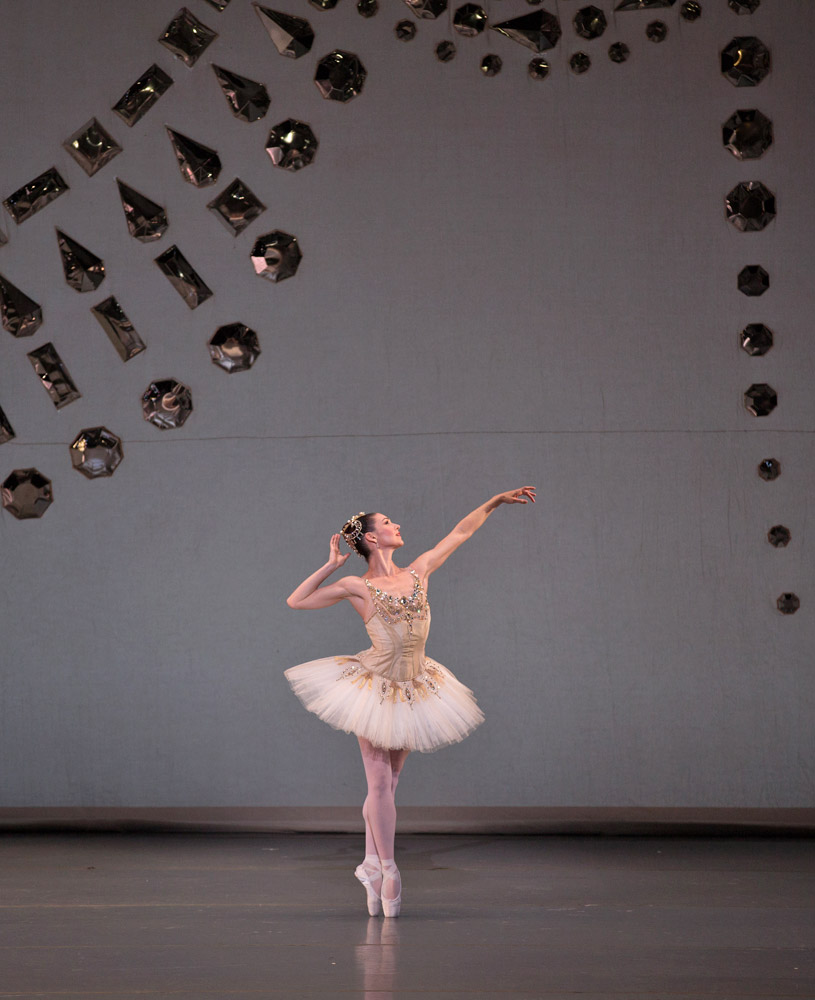
© Rosalie O’Connor. (Click image for larger version)
Alastair Macaulay has called you “one of America’s best classical ballerinas,” and Maina Gielgud said that you are “…an extraordinary and generous artist, and a real treat to work with. She has something so rare these days – real individuality of approach which is entirely sincere and true to herself.” Having accomplished so much, what remains?
To keep growing as an artist, for sure, and I’m a Senior at Northeastern majoring in Organizational Communications so I’ll hopefully be graduating soon. I want to try new roles, and keep working and finding inspiration in new things. It’s an interesting time, I think, in the art form.
Why is that?
Because these days genres that used to be distinct are becoming blurred. You have all of these things that are so extreme. You have these kids coming up in all these competition environments and it’s all about highlights and lots of pirouettes and they’re incredible and they take beautiful pictures in these crazy positions. And you don’t want the art form to stay in a museum of course but you also don’t want it to become so extreme that it loses its artistry, so trying to find a way to still maintain integrity within the art form is difficult. There are also a lot of things happening in today’s society with technology and social media. The challenge is finding the balance of using these advances to further our art form and audience without detracting from it.

© Liza Voll. (Click image for larger version)
If you hadn’t chosen ballet, what might you have done instead?
I never had any other ambition. My only ambition was to be a principal dancer. I don’t know if you can have a second ambition and still succeed in ballet. But now I’m starting to think about all that because I realize I have to have a second career.
And what do you imagine when you think of a second career?
I would love to work in development in the arts, for a company or a foundation or an institution like the Kennedy Center where they’re cultivating new programs each year.
Are you thinking of any specific organizations?
I was reading about the recent donation to Yale for an arts program, and I thought that sounded really interesting, so something like that.

© Gene Schiavone. (Click image for larger version)
In your video on the Boston Ballet web site you say “I love to dance… For me, being on stage is probably the most comfortable place in the world to be. To express yourself and no one can yell at you and no one can stop you and it just goes: it’s life, it’s live art, it’s in the moment and then it’s gone. I love it that it’s so entirely in the moment. Nothing compares to it.” So I’ll end our conversation by saying that I’ve been attending ballet for sixty years now and during that time very few dancers have conveyed the kind of unadulterated joy in dance that you do. That’s one of the roughly twelve dozen reasons you’re one of my favorite dancers.
That’s nice to hear. Thank you. You work so hard, and it’s such a hard art form, so it’s heartening to know that at least some of the time that joy gets communicated.









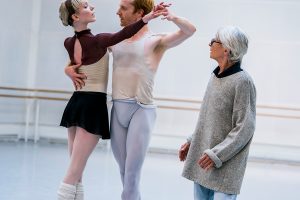
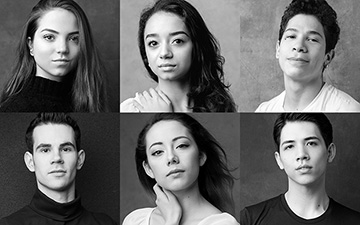
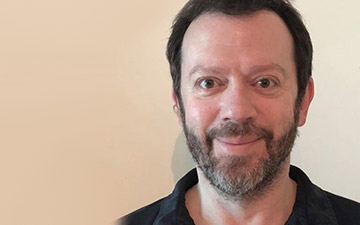
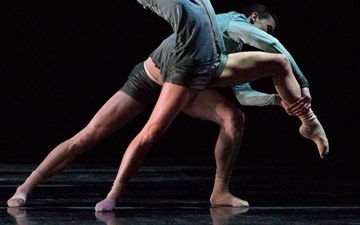

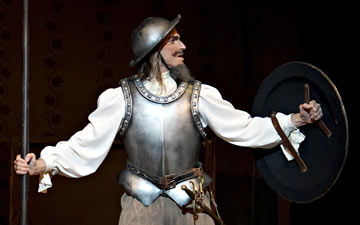


Kathleen, I so enjoyed reading about you and your life in ballet. I remember well, the evening Seanne & I came to visit you when you were a teenager living & going to school & dancing in Florida. You have grown into such a beautiful and graceful young woman, kathleen. I wish you continued success in your career and know that when you embark on a second career in your future, you will be successful with that as well. With fond memories, Gail Henkel